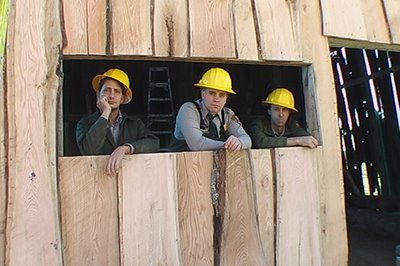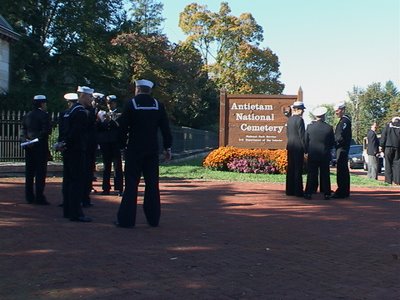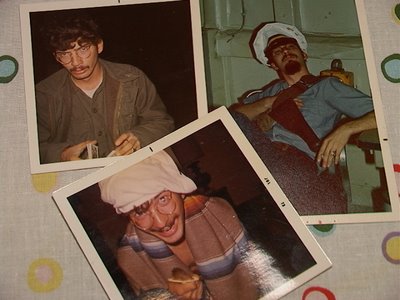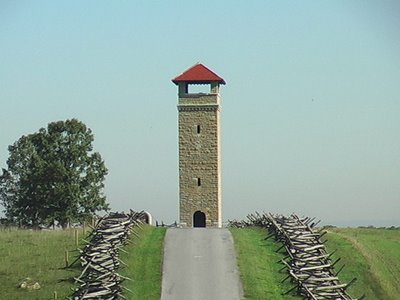
Fortunately, my wife and I have the same days off, Tuesdays and Wednesdays. Our "weekends" in October found us camping up on South Mountain. This month we'll be hiking Antietam National Battlefield every Tuesday. Today was our first outing and the weather couldn't have been better. We had been experiencing some pretty gloomy and chilly days but today was all bright and cloudless, with temperatures in the low 70s...perfect for hitting the trails.

We started at the trailhead for the Cornfield trail overlooking the Poffenberger Farm. Following the trail east toward Mansfield Avenue we encountered a sure sign of fall - soy beans being harvested.
 With the leaves rapidly thinning out we looked back to the west and got a great view of Nicodemus Heights which, like many of the features of the battlefield, is usually obscured by foliage. As the leaves continue to fall this is a great time of year to achieve a better sense of the lay of the land.
With the leaves rapidly thinning out we looked back to the west and got a great view of Nicodemus Heights which, like many of the features of the battlefield, is usually obscured by foliage. As the leaves continue to fall this is a great time of year to achieve a better sense of the lay of the land.Turning south we Skirted the East Woods, General Mansfield's jumping-off point. We got a nice view of the mortuary cannon that marks the spot where his minutes-long combat career instantly ended. At this point we veered off the trail and turned down the Smoketown road to visit the Mumma Farmstead.


From the Mumma springhouse we joined the trail to the Roulette Farm. While picnicking in the front yard of the Roulette House, I regaled my wife with the story of Mr. Roulette who, during the battle, would occasionally emerge from the safety of his cellar to cheer on the Union troops who were surging through his yard and fields toward the Sunken Road.
We cut across the Roulette Farm lane and marched toward the Sunken Road, concealed behind ridges with only the top half of the observation tower revealing its position for us.
 Cresting that hotly contested ridge just 60 yards north of the Sunken Road we descended into the road itself and followed Richardson Avenue back to the Visitors Center to chat up the Rangers and volunteers on duty and to refill water bottles.
Cresting that hotly contested ridge just 60 yards north of the Sunken Road we descended into the road itself and followed Richardson Avenue back to the Visitors Center to chat up the Rangers and volunteers on duty and to refill water bottles.Leaving the visitor's Center we hiked up the Dunker Church road passed the Maryland Monument and the blazing Maples outside Philly Park.


And back to the Poffenberger farm to visit the good rangers from the Cultural Resources Division who have been working hard all season to restore one of the historic outbuildings (which I will detail in a future posting).

It was a vigorous hike, a beautiful day, with perfect company, at the best possible place.
Antietam National Battlefield, come for the color, stay for the story.
Off-duty Ranger Mannie











